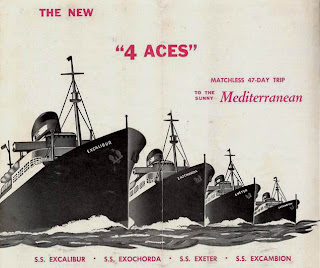Did you know that the Texas Clipper, which currently sits off the coast of South Padre Island, was once an attack transport in World War II? The Texas Clipper has undergone transformation…after transformation… after transformation.

After the war, the ship became the SS Excambion, one of the “4 Aces” of American Export Lines: the only fully air-conditioned ships in the world at the time.
In 1965, the versatile Excambion underwent yet another transformation—into a floating classroom. Recommissioned as the USTS Texas Clipper, the ship began a third life as a merchant marine training vessel with its home port in Galveston. For the next three decades the Texas Clipper would be home to merchant marine cadets, and by the time it was retired in 1996, it was the oldest active ship in the U.S. merchant marine fleet. Finally, the Texas Clipper, after lengthy bureaucratic wrangling, was designated to be sunk in the Gulf of Mexico as an artificial reef to provide habitat for marine life. In 2009, the ship was towed to its final resting place, 17 nautical miles off the coast of South Padre Island. Now, 136 feet below the surface, the venerable Texas Clipper lives on as home to a wide variety of underwater species.

Curley’s book is filled not only with meticulously researched technical and historical data about the ship’s construction, service record, crew procedures, and voyages, but also features lively anecdotes from crew members, passengers, and officers. More than 140 color and black-and-white photos illustrate the ship’s construction, its wide variety of shipboard life, the exacting process of making the Texas Clipper ready to become an artificial reef, and its final sinking in the Gulf of Mexico.
Read more about The Ship That Would Not Die and order your own copy here!


such a huge ship.
ReplyDeleteSig: Andrew
Celebrities Who Once Wore Salon Uniforms
discount uniforms